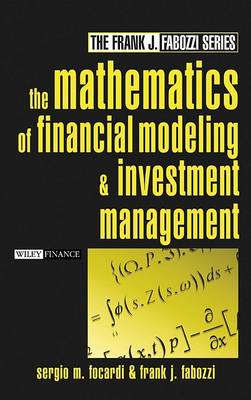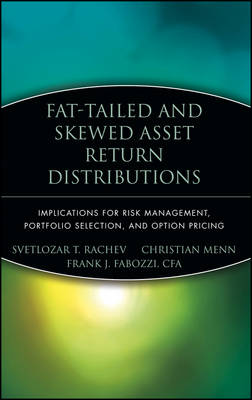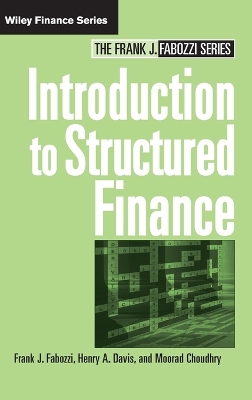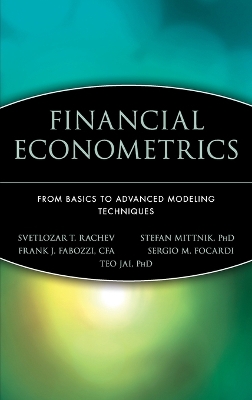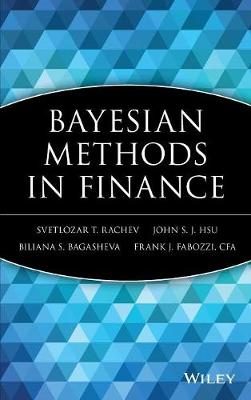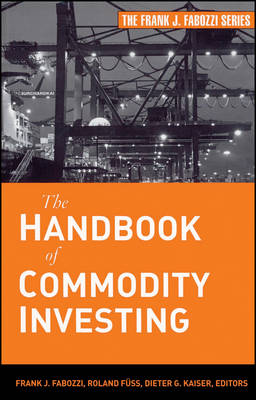Frank J. Fabozzi
52 primary works • 62 total works
Book 135
Financial Management and Analysis Workbook
by Pamela P. Peterson, Frank J. Fabozzi, and Wendy D. Habegger
This complement to the bestselling Financial Management and Analysis allows readers to self-test their understanding before applying the concepts to real-world situations.
Pamela P. Peterson, PhD, CPA (Tallahassee, FL), is Professor of Finance at Florida State University. Wendy D. Habegger (Tallahassee, FL) is a PhD student in Finance at Florida State University.
Book 136
The Theory and Practice of Investment Management Workbook
by Harry M Markowitz, Frank J. Fabozzi, and Leonard Kostovetsky
The Workbook includes a full answer key and brief chapter summaries, making the information that readers attain from The Theory and Practice of Investment Management (0-471-22889-0) that much more valuable.
Harry M. Markowitz, PhD (San Diego, CA), is a consultant in the finance area. In 1990 he shared the Nobel Prize in Economics for his work in portfolio theory.
Leonard Kostovetsky (Woodmere, NY) is a PhD student in finance at Princeton University. He is the founder of the Princeton Finance and Economics Forum.
Book 138
The Mathematics of Financial Modeling and Investment Management
by Sergio M Focardi and Frank J. Fabozzi
They also cover a variety of useful financial applications, such as: Arbitrage pricing; Interest rate modeling; Derivative pricing; Credit risk modeling; Equity and bond portfolio management; Risk management; and, much more. Filled with in-depth insight and expert advice, "The Mathematics of Financial Modeling & Investment Management" clearly ties together financial theory and mathematical techniques.
Book 139
Fat-Tailed and Skewed Asset Return Distributions
by Svetlozar T. Rachev, Christian Menn, and Frank J. Fabozzi
Book 140
Collateralized Debt Obligations – Structures and Analysis 2e
by Douglas J. Lucas, Laurie S. Goodman, and Frank J. Fabozzi
Book 142
Book 144
Financial Modeling of the Equity Market
by Sergio M Focardi, Frank J. Fabozzi, and Petter N Kolm
He is also the author of numerous articles and books on financial modeling. Petter N. Kolm, PhD (New Haven, CT and New York, NY), is a graduate student in finance at the Yale School of Management and a financial consultant in New York City. Previously, he worked in the Quantitative Strategies Group of Goldman Sachs Asset Management, where he developed quantitative investment models and strategies.
Book 148
Introduction to Structured Finance
by Frank J. Fabozzi, Henry A Davis, and Moorad Choudhry
Book 149
Advanced Stochastic Models, Risk Assessment, and Portfolio Optimization
by Svetlozar T. Rachev, Stoyan V. Stoyanov, and Frank J. Fabozzi
Book 150
Financial Econometrics
by Svetlozar T. Rachev, Stefan Mittnik, Frank J. Fabozzi, Sergio M Focardi, and Teo Ja ic
Financial econometrics is a quest for models that describe financial time series such as prices, returns, interest rates, and exchange rates. In Financial Econometrics, readers will be introduced to this growing discipline and the concepts and theories associated with it, including background material on probability theory and statistics. The experienced author team uses real-world data where possible and brings in the results of published research provided by investment banking firms and journals. Financial Econometrics clearly explains the techniques presented and provides illustrative examples for the topics discussed.
Svetlozar T. Rachev, PhD (Karlsruhe, Germany) is currently Chair-Professor at the University of Karlsruhe. Stefan Mittnik, PhD (Munich, Germany) is Professor of Financial Econometrics at the University of Munich. Frank J. Fabozzi, PhD, CFA, CFP (New Hope, PA) is an adjunct professor of Finance at Yale University’s School of Management. Sergio M. Focardi (Paris, France) is a founding partner of the Paris-based consulting firm The Intertek Group. Teo Jasic, PhD, (Frankfurt, Germany) is a senior manager with a leading international management consultancy firm in Frankfurt.
Book 151
Structured Products and Related Credit Derivatives
by Frank J. Fabozzi, Glenn M. Schultz, and Brian P Lancaster
Book 153
Bayesian Methods in Finance
by Svetlozar T. Rachev, John S. J. Hsu, Biliana S. Bagasheva, and Frank J. Fabozzi
Book 155
Book 156
The Handbook of Commodity Investing
by Frank J. Fabozzi, Roland Fuss, and Dieter G. Kaiser
Book 159
Subprime Mortgage Credit Derivatives
by Laurie S. Goodman, Thomas A Zimmerman, Douglas J. Lucas, Frank J. Fabozzi, and Shumin Li
The recent growth in subprime lending, along with a number of other industry factors, has made the demand for timely knowledge and solutions greater than ever before, and this guide contains the information financial professionals need to succeed in this challenging field.
Book 164
Book 168
Book 172
Advanced Risk Management and Portfolio Optimization
by Boryana Racheva Iotova, Svetlozar T. Rachev, Stoyan V. Stoyanov, and Frank J. Fabozzi
Book 173
Simulation and Optimization in Finance
by Dessislava A. Pachamanova and Frank J. Fabozzi
* Contains a unique combination of finance theory and rigorous mathematical modeling emphasizing a hands-on approach through implementation with software * Highlights not only classical applications, but also more recent developments, such as pricing of mortgage-backed securities * Includes models and code in both spreadsheet-based software (@RISK, Solver, Evolver, VBA) and mathematical modeling software (MATLAB) Filled with in-depth insights and practical advice, Simulation and Optimization Modeling in Finance offers essential guidance on some of the most important topics in financial management.
Book 174
Securitization is a financial technique that pools assets together and, in effect, turns them into a tradable security. The end result of a securitization transaction is that a corporation can obtain proceeds by selling assets and not borrowing funds. In real life, many securitization structures are quite complex and enigmatic for practitioners, investors, and finance students. Typically, books detailing this topic are either too lengthy, too technical, or too superficial in their presentation. Introduction to Securitization is the first to offer essential information on this topic at a fundamental, yet comprehensive level-providing readers with a working understanding of what has become one of today's most important areas of finance.
Authors Frank Fabozzi and Vinod Kothari, internationally recognized experts in the field, clearly define securitization, contrast it with corporate finance, and explain its advantages. They carefully illustrate the structuring of asset-backed securities (ABS) transactions, including agency mortgage-backed securities (MBS) deals and nonagency deals, and show the use of credit enhancements and interest rate derivatives in such transactions. They review the collateral classes in ABS, such as retail loans, credit cards, and future flows, and discuss ongoing funding vehicles such as asset-backed commercial paper conduits and other structured vehicles. And they explain the different types of collateralized debt obligations (CDOs) and structured credit, detailing their structuring and analysis. To complement the discussion, an introduction to credit derivatives is also provided.
The authors conclude with a close look at securitization's impact on the financial markets and the economy, with a review of the now well-documented problems of the securitization of one asset class: subprime mortgages. While questions about the contribution of securitization have been tainted by the subprime mortgage crisis, it remains an important process for corporations, municipalities, and government entities seeking funding. The significance of this financial innovation is that it has been an important form of raising capital for corporations and government entities throughout the world, as well as a vehicle for risk management. Introduction to Securitization offers practitioners and students a simple and comprehensive entry into the interesting world of securitization and structured credit.

